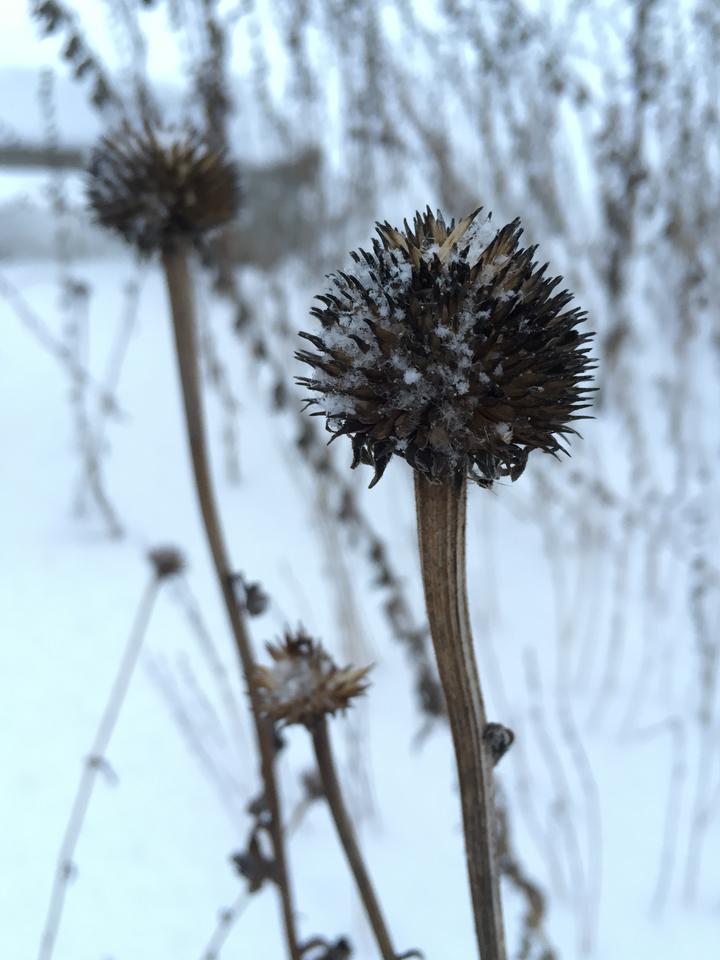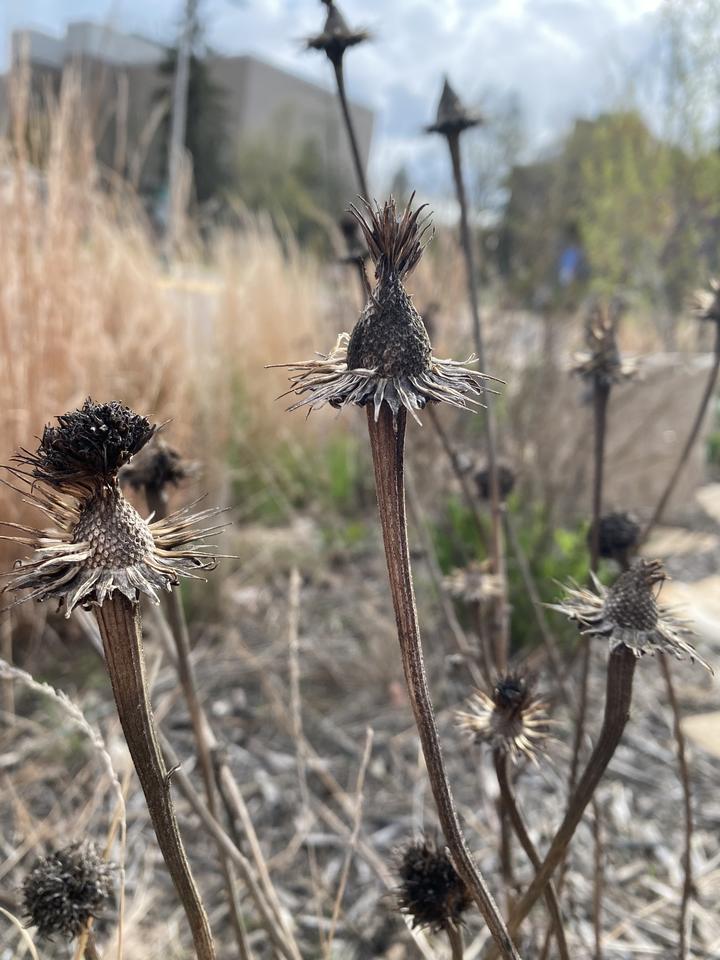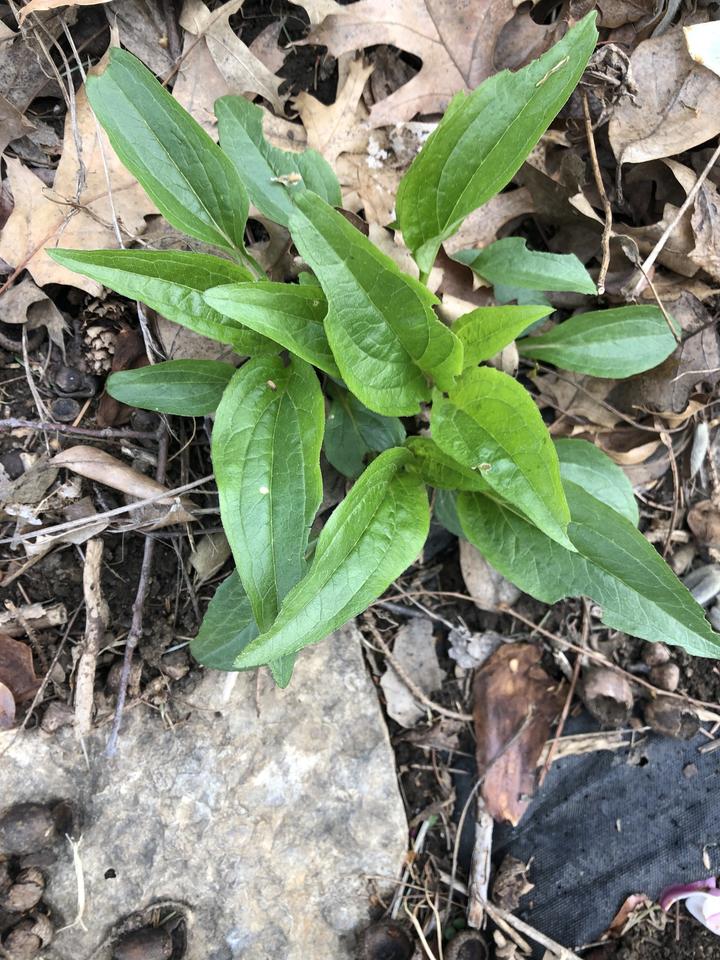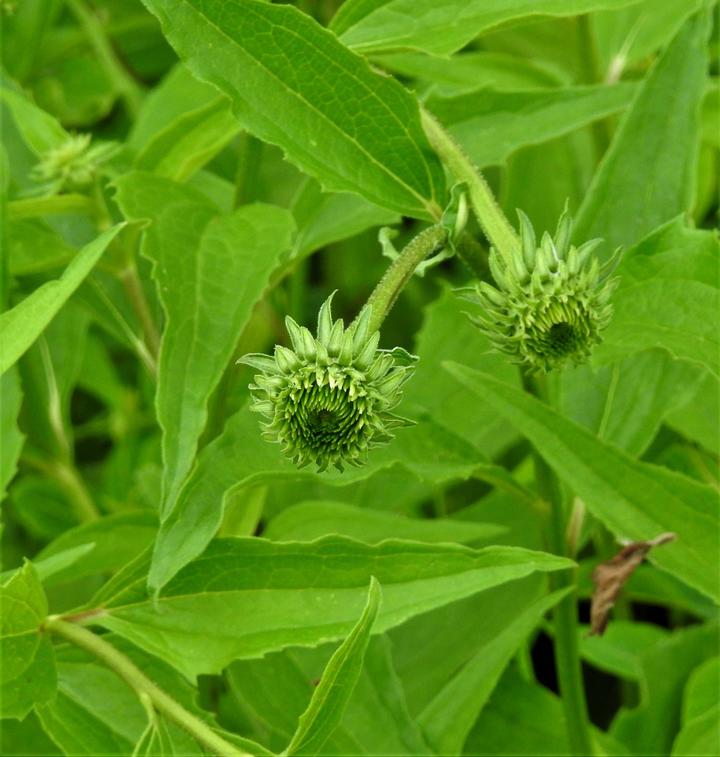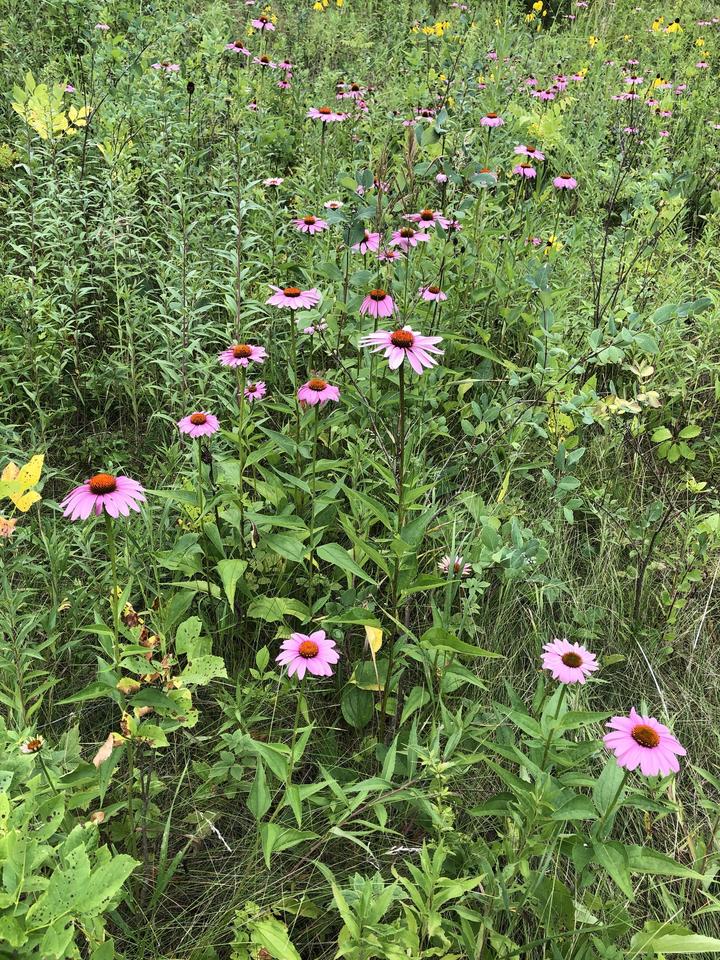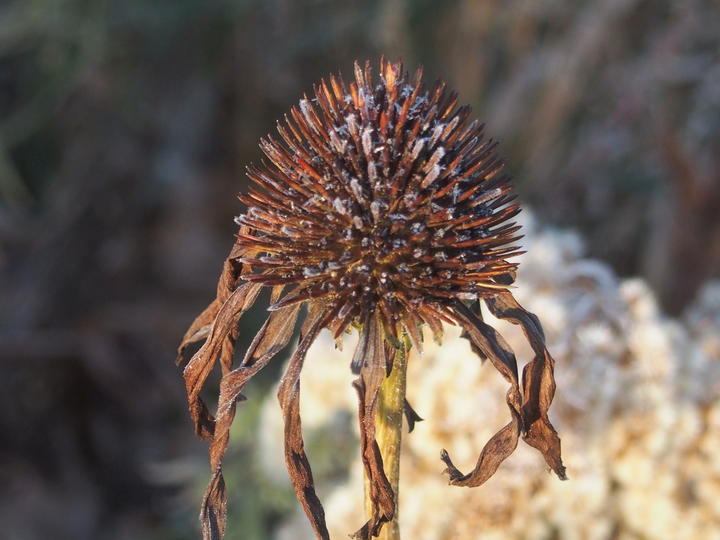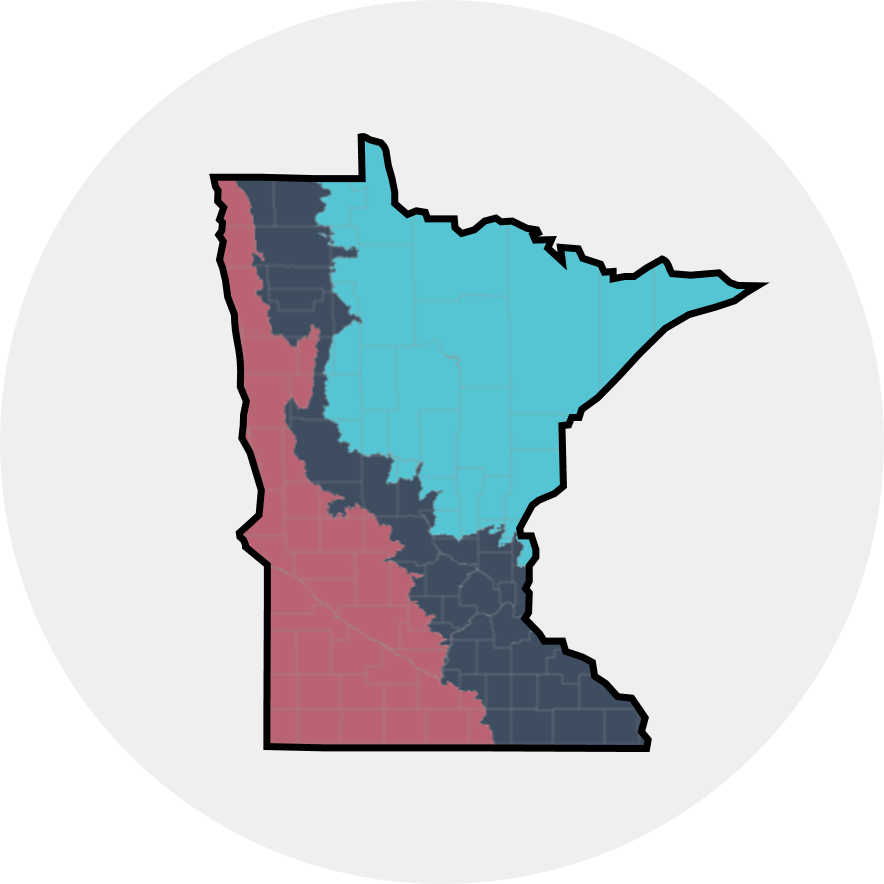More names for this plant
The Dakota and Anishinaabe were among the earliest people to name Minnesota’s plants and animals, as well as to understand them in relation to Minnesota’s climate and seasons. Those original names are still in use, and several are included on the Season Watch website. However, complete translations were not available.
Latin (or scientific name): Echinacea purpurea
The scientific community has a convention of assigning agreed-upon Latin names to every kind of organism. Using scientific names helps people communicate confidently about the same organism and organize lifeforms based on how closely related they are.
More common names: Echinacea
Page contents
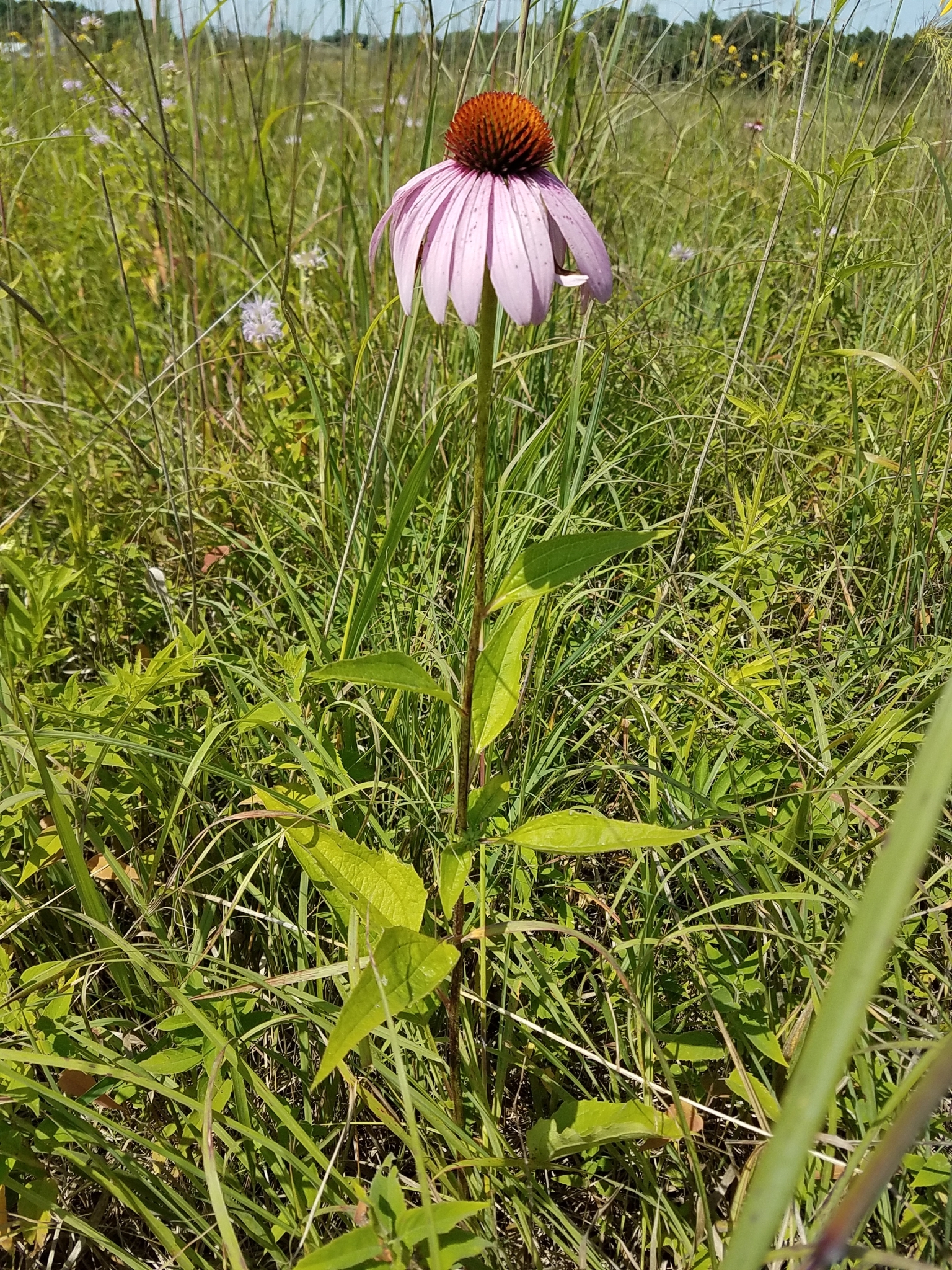
August 9, 2019, Stearns County, Minnesota
Photo © Chantel, some rights reserved (CC-BY-NC)
iNaturalist observation
About the purple coneflower
- Purple coneflowers are perennial herbaceous plants that have pink to purple flowers with orange centers.
- They attract many pollinators when they flower in mid-summer to early fall.
- The flowers produce spiny seeds that are a fall food source for birds.
- These plants grow in the western half of Minnesota.
- The purple coneflower, or echinacea, is a part of traditional Native American medicine. It also appears in commercially available herbal supplements for colds and flu.
Visual guide to phenology
Watch for the appearance of leaves, flowers, and fruits. Take notice of when flowers open and fruits ripen.
Note to observers
This page explains general clues to watch for when observing purple coneflower phenology. However, this page does not explain how to identify this plant or collect data in a standardized way.
- For help with identification, see Minnesota Wildflowers.
- For guidance on collecting data, see Nature’s Notebook.
Graphs and historical data
Note: The Orientation Center provides a map, as well as information on reading graphs; interpreting summary statistics, who collected the data and how; and how to download datasets for independent exploration.
Flowering
- Earliest: July 8 (occurred in 1962 and 1965)
- Average: July 21
- Latest: August 1 (occurred in 1961)
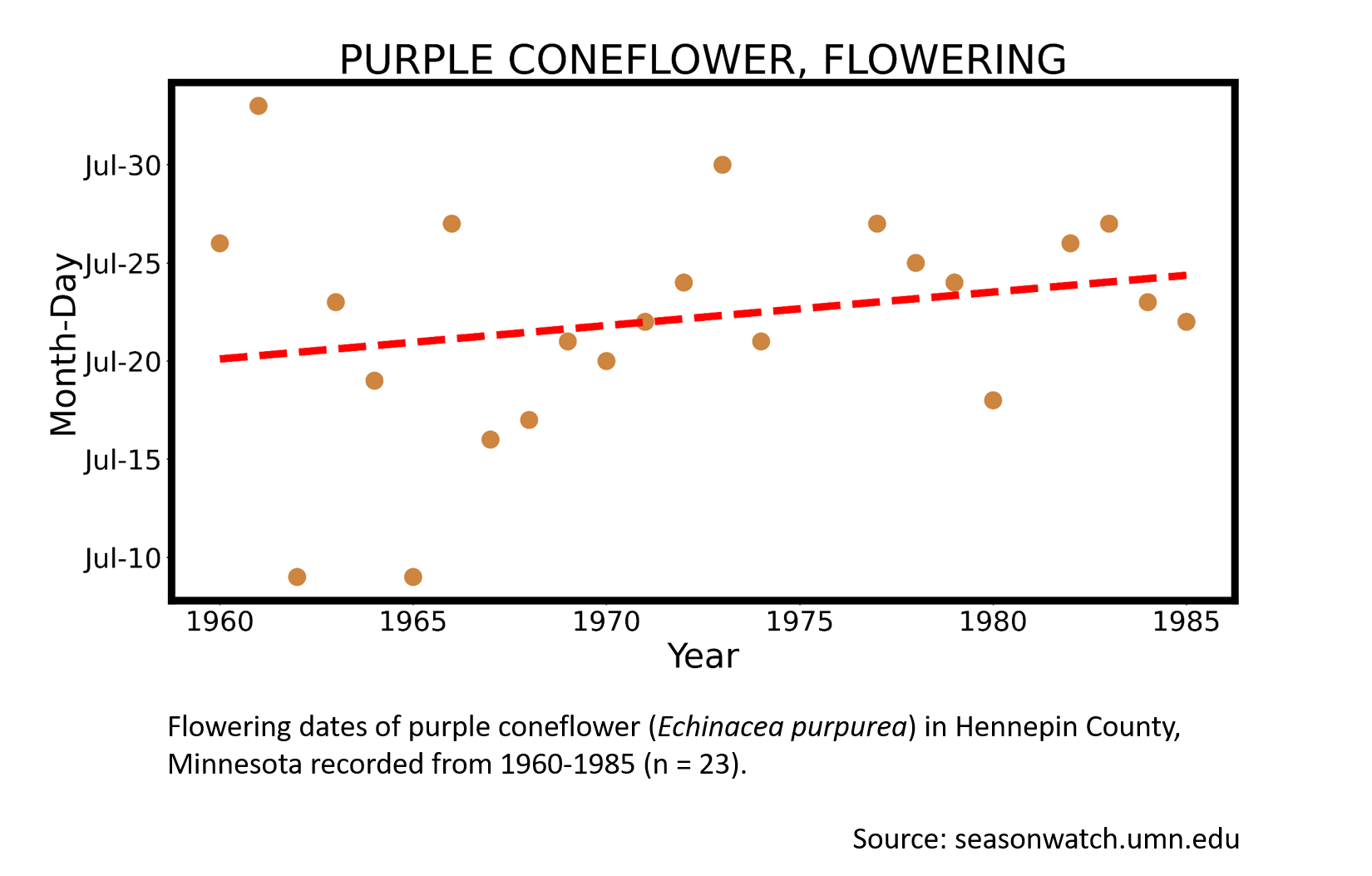
Last flower
- Earliest: September 1 (occurred in 1964)
- Average: October 1
- Latest: October 22 (occurred in 1980 and 1984)
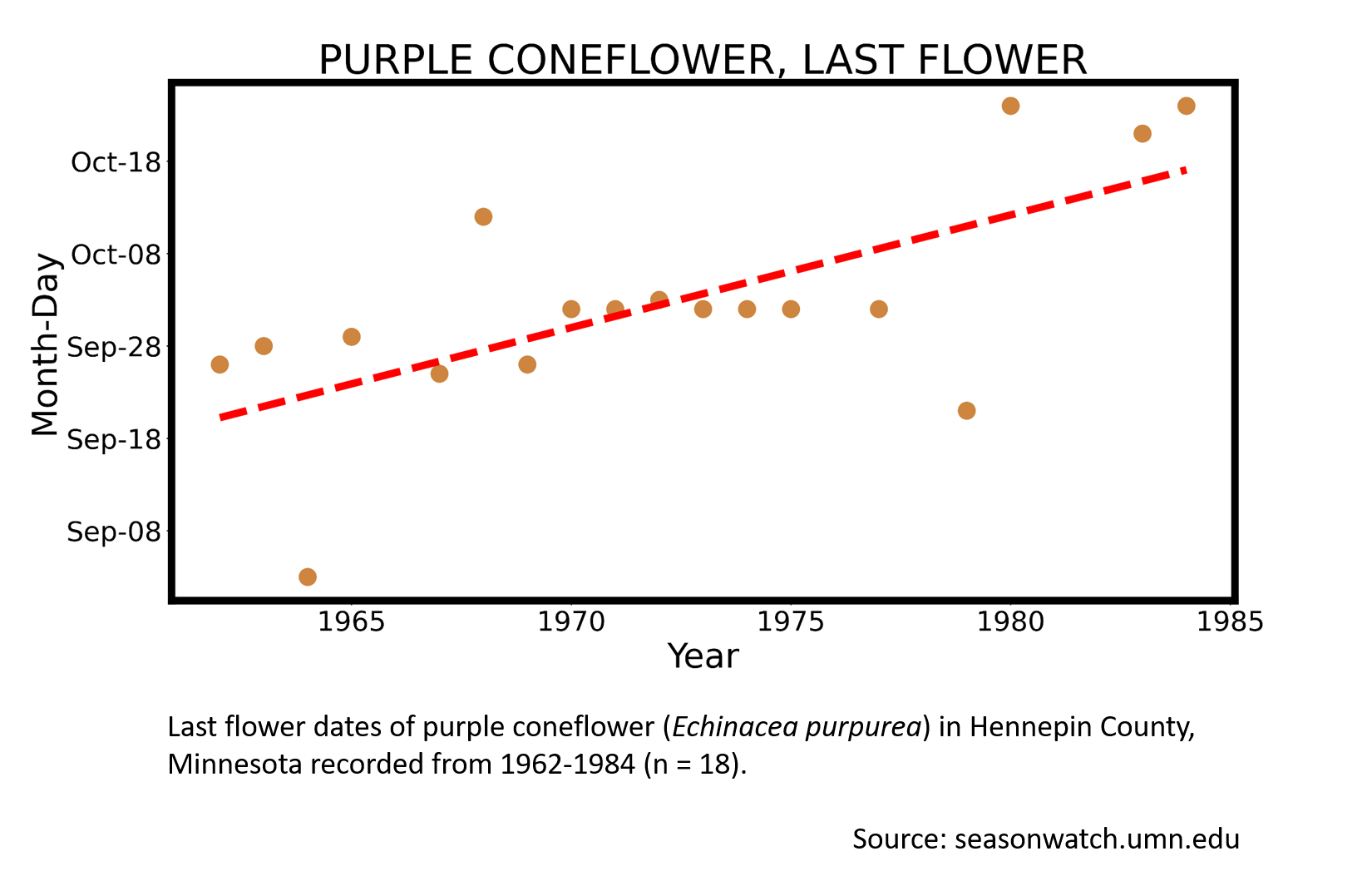
More resources
Keep exploring Season Watch
Keep exploring Season Watch
Co-author: Lynsey Nass, Minnesota Master Naturalist
